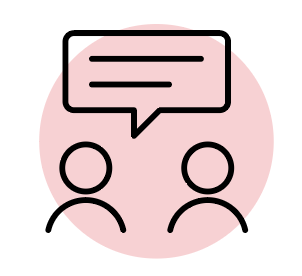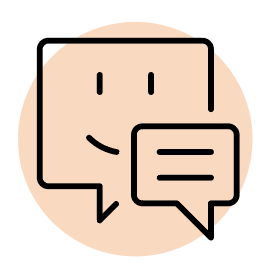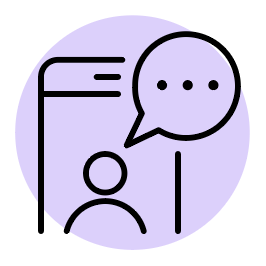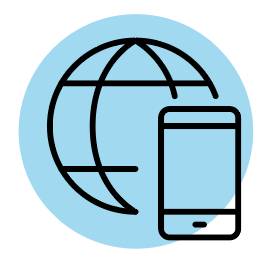Personalization in healthcare communications is a proven way to connect with members and keep them engaged with their health. But personalization doesn’t always equal high health literacy.
Healthcare navigation is confusing enough, but when the language used is complex, the messages don’t always resonate. That’s why individualizing communications with health literacy in mind puts you in a better position to make meaningful connections.
How to Think About Health Literacy
Health literacy refers to an individual’s ability to understand and use health information in order to make informed decisions about their health. This includes understanding medical terms, appointment schedules, prescription labels, and other health-related information.
We know that low health literacy is a major barrier that can lead to a number of problems, including poor communication with healthcare providers, difficulty understanding and following treatment plans, and an increased risk of negative health outcomes.
Combating these risks is key to improving health, building trust, and empowering members. Here are 5 impactful insights to keep top of mind when crafting healthcare communications in order to become a health literacy champion.

#1 - Don't Get Clever & Communicate Clearly
While it can be fun to get creative with language, simple and concise language always wins the day. Alliteration, puns, and quippy phrases may be great for advertising campaigns, but this approach can get lost in translation when dealing with complex information, like what often needs to be communicated in healthcare.
Using plain language, avoiding medical jargon, and providing clear, easy-to-understand health information, as well as providing visual aids, will increase the likelihood of action from a member.

#2 - Stick to Equitable, Unbiased Language
Knowing your audience is critical when communicating about something as important as health. You only get so many chances to engage, and misidentifying a member can quickly build a barrier. This is why batch-and-blast outreach models don’t promote engagement because they can be packed with bias and exclusionary language. This of course isn’t the intention, but can lead to missteps.
By using inclusive language in your outreach and personalizing messages every step of the way, you’ll reduce the risk of misidentifying someone, which will build trust and a foundation for meaningful interactions in the future.

#3 - The Approach Matters Just as Much as the Words
Health literacy isn’t just about the words that are used, it’s also about the approach. Use outreach channels that are available and preferred by your members. Using the right language only matters if your communications are reaching them. Knowing when to call, text, or visit in-person will be different for every member, but is important to explore. This requires a personalized approach and a test-and-learn mentality to find out what works for individual members.
Take into consideration the different ways people like to consume information. Sometimes, a conversation is more effective than a text message. Other times, a text is more straightforward and convenient than a phone call. Find out what your members want and act accordingly. This will help to build health literacy.

#4 - Build Trust Before Diving Into Clinical Needs
The reasons a member may be unengaged varies from person to person. But the problem may not be health literacy, it may be a lack of trust. This is why you should always be focused on your relationship with a member before tackling clinical needs.
Make sure you know what matters to someone before getting clinical. Because when there’s trust between you and a member, they are more likely to engage, ask questions, and take a more active role in managing their health.
Knowing your audience is hugely underrated. When a person can see themselves as a part of the story, they are more likely to value what’s being asked of them and take action. Sometimes this means putting clinical needs in the backseat and building rapport first.

#5 - Send Messages in a Member’s Preferred Language
A member may have high health literacy, but if they can’t understand what you’re saying because you aren’t communicating in their preferred language they’ll miss the meaning entirely. We can play a pivotal role in improving health literacy by providing resources to members and being aware of, and addressing, any language or cultural barriers that may exist.
Take the time to identify preferred written and spoken languages for individual members because the likely result will be higher engagement rates.
Bonus Insight: Sometimes Words Aren't the Answer
Consider an out-of-the-box approach to engagement and build health literacy through creative campaigns using art, music, or poetry. Although we said not to get clever with written communications, a creative approach using artistic mediums may resonate. Just take a look at the results of this arts-based public health literacy program to see the impact of their campaign.
In addition, partnering with community-based organizations and public health programs can be effective in increasing health literacy and improving health outcomes for individuals and communities. This boils down to trust—members are more likely to trust and interact with their community, so leveraging a community-based program, like Reema, is effective to engage and improve health outcomes.
To become a true communication and health literacy champion, you have to know your members as people, not just their clinical needs. Improving health literacy is built on trust and meaningful engagement, and is essential for ensuring that individuals have the knowledge and feel empowered to make informed decisions about their health and effectively manage their care.



